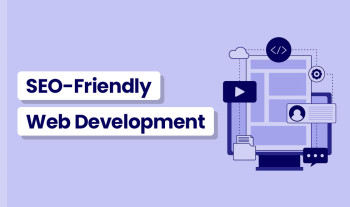Choosing the Right Backend Language for Web Development: A Comprehensive Guide
In the ever-evolving world of web development, choosing the right backend programming language is crucial to building robust and efficient web applications and servers. Backend web developers are the architects behind the scenes, responsible for designing the server-side logic that powers websites and web applications. While there are numerous programming languages available, this blog will explore the most popular choices, their strengths, and when to use them.
PHP: The Old Reliable
PHP, which stands for Hypertext Preprocessor, has been a staple of web development for decades. It's known for its simplicity and the vast number of open-source libraries and frameworks available. PHP is used by popular platforms like WordPress and Drupal, making it a top choice for content management systems.
Pros:
Easy to learn and use for beginners.
Large community support and a wealth of online resources.
Efficient for web development tasks.
Cons:
Historically known for security vulnerabilities.
Not as versatile for non-web applications.
When to use PHP: Use PHP when you need to develop content-heavy websites, blogs, or e-commerce platforms, and you prioritize ease of use and a wide range of available plugins.
Ruby: The Elegant Language
Ruby is known for its elegance and developer-friendliness. It is the language behind the Ruby on Rails framework, which is celebrated for its convention over configuration and rapid development capabilities.
Pros:
Elegant syntax and easy-to-read code.
Highly productive for rapid application development.
Strong emphasis on clean, maintainable code.
Cons:
Slower performance compared to some other languages.
Smaller community compared to languages like PHP or Python.
When to use Ruby: Use Ruby when you want to create web applications quickly and efficiently, focusing on developer happiness and clean code.
Python: The Versatile Workhorse
Python is a versatile programming language that has gained immense popularity in recent years. Its ease of learning and diverse range of libraries make it an excellent choice for backend web development.
Pros:
Versatile, used in various applications beyond web development.
High readability, making it easier to maintain code.
Strong community support and extensive libraries.
Cons:
Slower than some languages like Java.
May require additional configuration for high-performance applications.
When to use Python: Python is an excellent choice when you need a language that can handle web development as well as various other tasks. It's perfect for building scalable, data-driven web applications.
Java: The Enterprise Solution
Java has been a staple of enterprise web development for many years. It's known for its performance, scalability, and security features. Java-based frameworks like Spring and Java EE are popular choices for building robust web applications.
Pros:
Exceptional performance and scalability.
Strongly typed language for enhanced security.
Extensive libraries and frameworks for enterprise applications.
Cons:
More verbose than some other languages.
Longer development times compared to more rapid languages.
When to use Java: Java is the ideal choice for large-scale enterprise web applications, where performance, security, and scalability are top priorities.
Node.js: The JavaScript on the Server
Node.js is a runtime environment that allows developers to use JavaScript for server-side programming. It's known for its speed and efficiency, making it a popular choice for building real-time, data-intensive applications.
Pros:
Efficient event-driven architecture for high concurrency.
Seamless integration with frontend JavaScript.
Large and active community support.
Cons:
May not be the best choice for CPU-intensive tasks.
Callback-based coding can lead to callback hell in complex applications.
When to use Node.js: Node.js is a great choice for building real-time applications, APIs, and microservices, particularly when working with JavaScript-heavy frontends.
Go (Golang): The New Kid on the Block
Go, often referred to as Golang, is a statically typed language developed by Google. It's gaining traction for its speed and efficiency, making it a compelling option for web development.
Pros:
Exceptional performance and efficient use of resources.
Strong support for concurrency and parallelism.
Built-in support for web servers.
Cons:
Smaller community compared to older languages.
Learning curve for developers new to Go.
When to use Go: Consider Go for web applications where performance and efficiency are critical, particularly when building microservices or APIs.
Choosing the right backend language for web development depends on your project's specific needs, your team's expertise, and your long-term goals. Each language discussed here has its unique strengths and weaknesses, and the decision should be based on a careful evaluation of these factors. Whether you opt for the simplicity of PHP, the elegance of Ruby, the versatility of Python, the enterprise-grade capabilities of Java, the speed of Node.js, or the efficiency of Go, your choice will ultimately shape the success of your web application or server. Keep in mind that the web development landscape is constantly evolving, so staying updated on the latest trends and technologies is key to making informed decisions for your projects.










